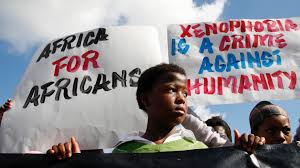Xenophobia as a Social Representation: Meaning-Making, Intergroup Dynamics, and Collective Identity

Abstract
Xenophobia—commonly defined as an irrational fear or hatred of foreigners—has been widely examined in the context of intergroup relations, prejudice, and cultural threat. Yet, this phenomenon is not merely an individual pathology or a stable trait; it is a dynamic and culturally mediated representation. Drawing on Social Representations Theory (SRT), this article argues that xenophobia must be understood not only as a psychological response to perceived threat, but also as a socially constructed narrative shaped by history, discourse, and identity. This perspective sheds light on the symbolic function of xenophobia in constructing group boundaries and legitimizing exclusionary practices, particularly in times of social uncertainty.
Introduction
Xenophobia, from the Greek xenos (foreigner) and phobos (fear), has long been treated in psychology as a form of prejudice or aversive affect toward outgroups. Much of the literature has addressed its correlates—low openness to experience, high authoritarianism, and intergroup threat—but this primarily individualistic framing risks decontextualizing xenophobia from the socio-historical environments in which it flourishes. This paper approaches xenophobia as a social representation: a shared system of meaning through which groups make sense of otherness.
As Serge Moscovici (1961) first argued, social representations are not mere reflections of objective reality, but are actively constructed through communication and social interaction. In the case of xenophobia, representations of the “foreigner” are not stable or universal; they are dynamic, culturally variable, and laden with symbolic content that reflects the group’s anxieties, aspirations, and historical memory.

Xenophobia and the Construction of “the Other”
Social Representations Theory emphasizes that categories such as “foreigner” or “immigrant” do not pre-exist their social context. Instead, they are constructed through processes of anchoring and objectification—the mechanisms by which novel or threatening phenomena are made intelligible through familiar categories and images.
In times of political or economic instability, for example, immigrants may become anchored to existing narratives of moral decline, criminality, or national vulnerability. Media discourses often objectify these associations through potent imagery—border crossings, veiled faces, or crowded boats—transforming abstract anxieties into concrete symbols. These representations serve not only cognitive functions (i.e., making sense of ambiguity), but also ideological functions, justifying policies of exclusion and the reinforcement of in-group identity.
The Role of Collective Memory
Xenophobic representations are rarely novel. They are part of a broader symbolic repertoire that societies draw upon in times of perceived threat. For instance, postcolonial contexts often carry latent memories of imperialism, conquest, or cultural superiority, which can be reactivated in contemporary anti-immigrant discourse. As representations sediment over time, they become part of the “common sense” knowledge of a group—taken-for-granted assumptions about who belongs and who does not.
In this regard, xenophobia is not simply fear; it is meaning-laden fear—fear that draws its legitimacy from history, myth, and social consensus. It is this embeddedness in collective memory that makes xenophobia so resistant to counter-evidence or rational debate.

Xenophobia, Identity, and Symbolic Boundaries
From a social psychological standpoint, xenophobia plays a crucial role in identity construction. Social identity theory has long emphasized the psychological need for positive distinctiveness. Social representations theory extends this by analyzing how group identities are constructed discursively through oppositional categories. In defining the foreigner as “dangerous,” “uncivilized,” or “incompatible,” the in-group defines itself as safe, moral, and cohesive.
Thus, xenophobia often intensifies in contexts where group boundaries are perceived as unstable or permeable—during periods of mass migration, cultural globalization, or geopolitical crisis. The foreigner, in these instances, becomes a symbolic threat not just to material resources but to the narrative coherence of the nation-state.
Implications for Intervention
Understanding xenophobia as a social representation has practical implications. Efforts to reduce prejudice must engage not only with individual attitudes, but with the broader representational field in which those attitudes are situated. Public narratives, media imagery, educational curricula, and political rhetoric all contribute to the formation of xenophobic meanings. Interventions, therefore, must be both discursive and dialogical—creating alternative representations that reframe otherness not as threat, but as relational possibility.
Moreover, Social Representations Theory encourages researchers and policymakers to consider not just what people think, but how they come to think it—tracing the historical, cultural, and communicative pathways through which fear of the foreigner becomes naturalized.
PSYCHOTHERAPY APPOINTMENTS : 07946 579645 / 0207 467 8564
Conclusion
Xenophobia cannot be reduced to a pathological fear of the unfamiliar; it is a collectively constructed system of meaning that reflects deep-seated anxieties about identity, belonging, and social change. Social Representations Theory offers a valuable framework for understanding how these meanings take shape, persist, and can potentially be transformed. In a world increasingly marked by mobility, hybridity, and intercultural contact, developing a more reflexive and dialogical understanding of “the other” is not only a theoretical task—it is a political and ethical imperative.


